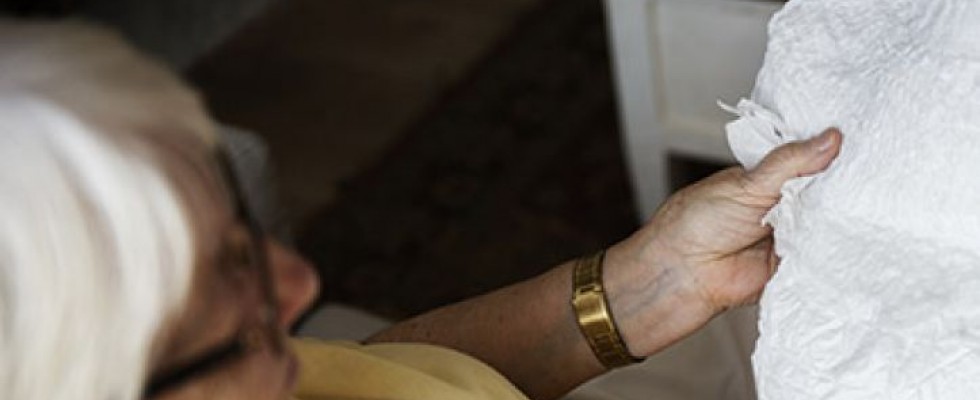
When disposable incontinence products for adults began to surface in the middle of the century preceding the one in which we now live and pee, the “adult diaper” quickly became the product of choice for our loved ones living with any form of incontinence. I’m purposely leaving out that era where, as adults, we were given a cloth diaper and a disposable underpad (then, and to some extent, now called a “chuck”) and patted on the head before bedtime by a nurse wearing a cap. Even when we began using disposable products, those “adult diapers” created only a momentary gap between the time our bladders emptied and the time that our clothes and linens were soaked (hence the continued need for “Mr. Chuck”).
Back then, products that helped manage toileting needs were about the thickness of the comforter on my bed during winter, and, under clothing, had all of the subtle discretion of an angry pimple on your chin.
We now have much sleeker and vastly more absorbent disposable tabbed briefs. With the advent late last century of special polymers now routinely used in these products, our designs have improved tremendously. For those with the luxury of choice, many of these product options now include “cutting edge” benefits such as reduced leakage and odor. (Sorry Chuck, thank you for your service and please take a seat.) Even still, most people do not want to wear this product.
Why and Why Not the Tabbed Brief
For people with the good fortune of being able to toilet, the tabbed brief is generally a product of last resort for dealing with bladder leakage at any level/volume. Here are just a few reasons why:
- While it is true that the tabbed brief is the most absorbent product type offered by most companies, a few companies produce other product types such as disposable protective underwear and sometimes even bladder control pads that equal or surpass the typical store brand tabbed briefs.
- In circumstances where the bathroom situation (access, proximity, privacy) is good (for example, at home), many times a bladder control pad, or at most, a disposable protective underwear garment provides enough protection given immediate access to toileting.
- For many people (especially those with limited dexterity in their hands…perhaps stemming from conditions such as arthritis or a mild stroke), putting on the tabbed brief can be challenging. By comparison, disposable protective underwear is much easier to put on and much less cumbersome during toileting.
Reserving the tabbed brief for only those longer wear situations, such as sleeping at night and extended car trips where discretion/concealment are less of a concern, helps people arrive at more dignified options to address bladder issues.
There are some circumstances where tabbed brief is truly required. Here are some prime examples:
- Regular incontinence of stool. If accidents related to the bowel are part of your customer’s daily life, the tabbed brief is the right choice. Regardless of who makes it, disposable protective underwear is simply not, by design, the best clinical selection for this situation. Because the tabbed brief is more difficult to put on alone, using it may lead to a reliance on assistance and a corresponding decline in independence. Remember, incontinence remains the No. 2 reason why people are directed to long-term care vs. living at home.
- The bedridden person. Those who either spend all or the majority of their time in bed (due to some underlying condition) and are only intermittently toileting (this includes using the bedside commode and/or urinal), are better served by the tabbed brief. The tabbed brief offers a much easier process for both patient and caregiver.
- The bariatric person. For those who are overweight and require a lift to transfer to the commode, the tabbed brief is often a better choice. This is true for many reasons, not the least of which is that the transfer process takes additional time, and often the person is unable to wait that long before the bladder involuntarily releases its contents.
Just because someone may need the extra protection of a tabbed brief at night, it doesn’t mean that they need this same level of protection during waking hours.
The bottom line is that none of us want to be forced to wear a product that we feel embarrassed by or that we feel limits our ability to enjoy life.
Additionally, we should always recommend the least amount of product possible that will still deliver healthy outcomes, both clinically and socially. As always, put yourself in your customer’s shoes, and think about what you would want. Most of the time, we all feel similarly about issues like dignity and compassion.
